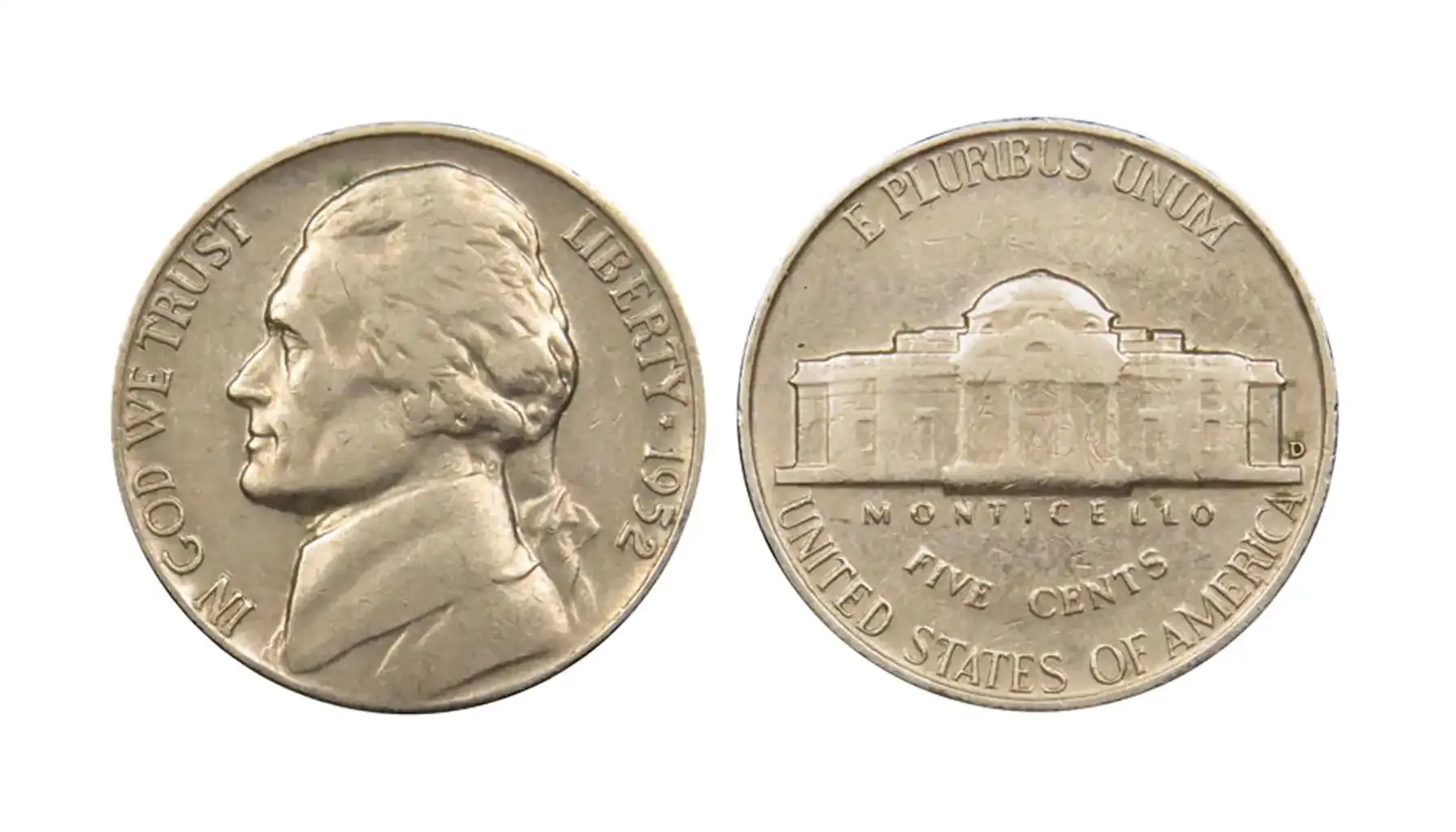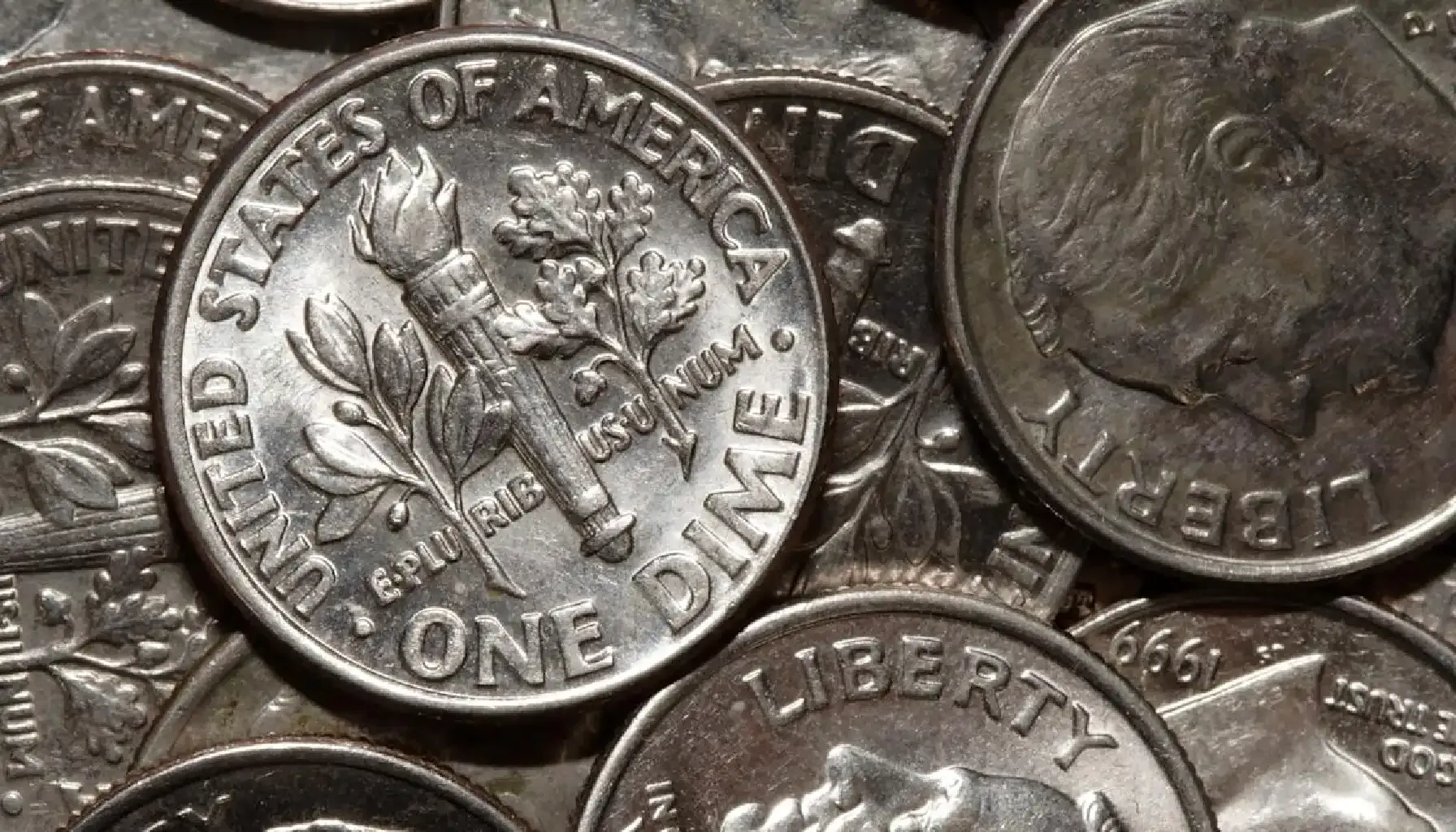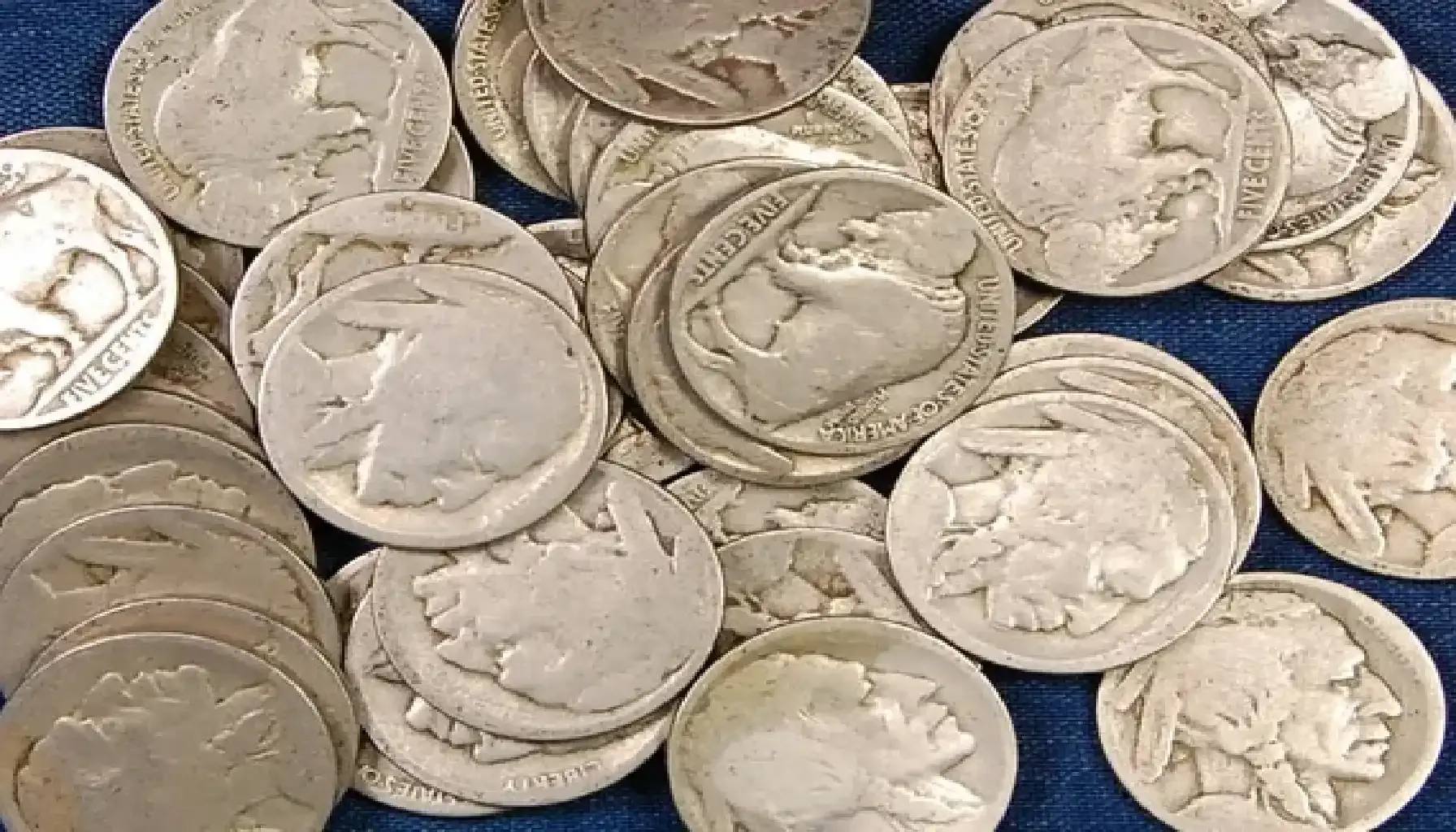Contents:
Coins go hand in hand with their senior numismatic siblings, i.e., banknotes and bills, and in the era of physical currency, we regularly utilized both types with equal proficiency. Nevertheless, back then, in the previous century, the use of banknotes was ubiquitous and inevitable, which is why some pristine (or almost flawless) instances from that period are of great interest these days.
1953 $2 bill red seal is one of the greatest examples of ordinary-looking numismatic creations that might be worth far more than its face value. So, how much is a 1953 $2 bill worth, and why use a coin identifier with this type of currency, too?
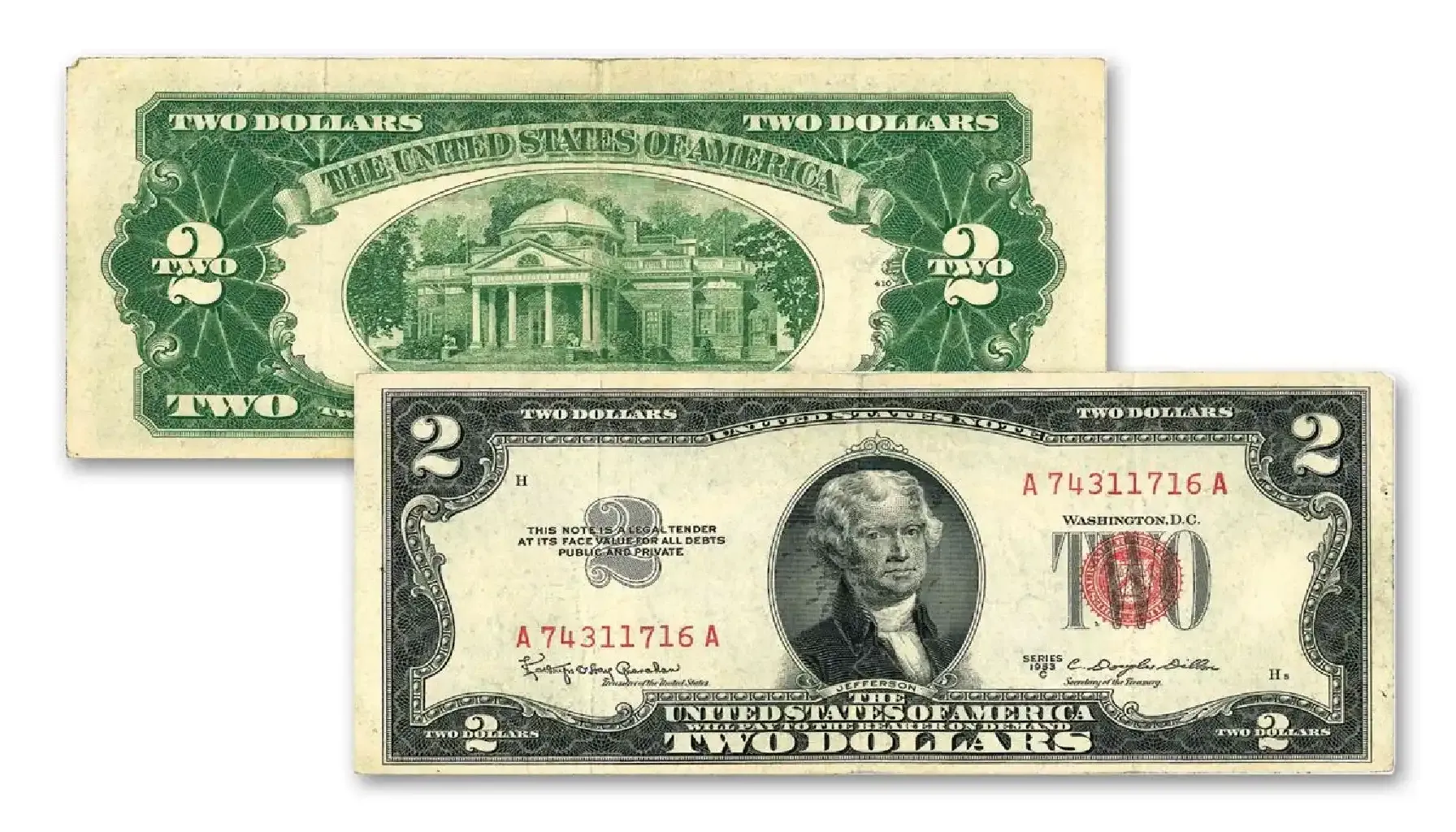
A Bit of History of the 1953 $2 Bill
The 1953 $2 bill is indeed an iconic piece of American currency, praised for both its design and its place in history. These bills, commonly referred to as "United States Notes," were issued in the middle of the 20th century and were a part of the US Legal Tender series. An interesting fact: unlike modern Federal Reserve Notes, these bills were directly backed by the US Treasury, which is quite notable and value-bearing.
In essence, the 1953 red seal 2 dollar bills were printed so as to satisfy the demands of an evolving economy while maintaining the distinctive red Treasury seal that is characteristic of all the US Notes. Although $2 notes were extensively used for daily transactions at the time, collectors considered them appealing due to their limited circulation and eventual elimination. Hence, it is just a reminder of the already gone times, as well as the relics with an extraordinary 1953 $2 bill value.
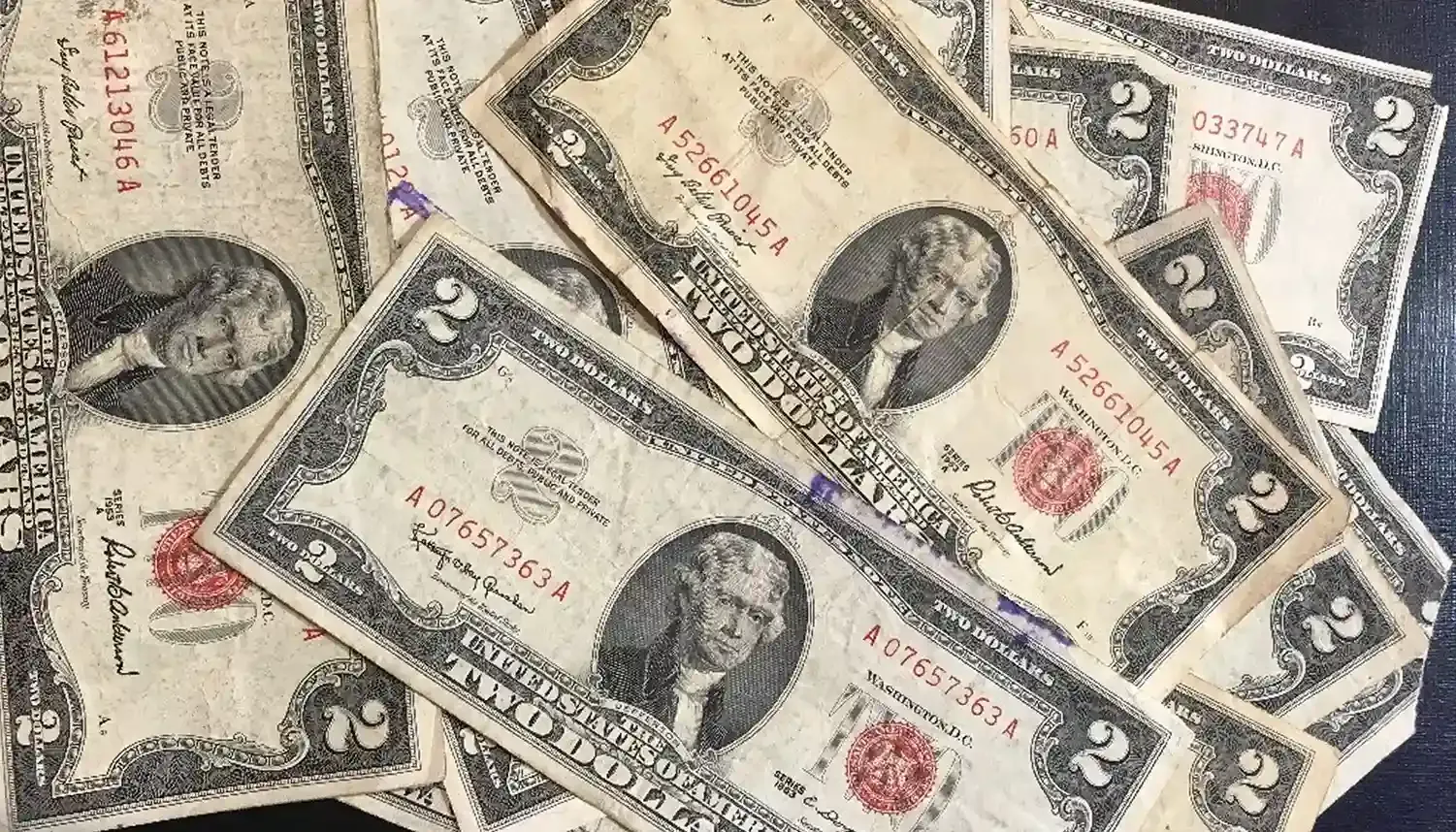
Related article: The 2021 Quarter Worth.
What About the Design of the 1953 $2 Bill?
The 1953 red seal $2 bill has a distinctive and exquisite design that transparently reflects the artistic aspirations of its time. The picture of Thomas Jefferson, surrounded by elaborate engravings and accompanied by the red US Treasury seal and serial numbers, is the core of the obverse side. On the reverse, though, there can be seen the intricate depiction of Jefferson's Monticello estate.
1953 $2 Bill Features | |
Portrait | Thomas Jefferson |
Obverse Design | Jefferson’s portrait with the red Treasury seal |
Reverse Design | Monticello estate |
Ink Colors | Black and red (obverse); green (reverse) |
Serial Number | Red, matching the Treasury seal |
Paper Type | Cotton-linen blend |
Dimensions | 6.14 x 2.61 inches (i.e., standard US bill size) |
All in all, the intricately etched details and dramatic red accents form an illustrative and valuable representation of a period before automated currency printing. The 1953 2 dollar bill red seal is a cherished item for collectors that has a fine appearance and a higher 1953 red seal $2 bill value.
Types of 1953 $2 Bills
1953 2 dollar bill red seal value can also be seen through the prism of its types. Initially, there were four different series of this note, i.e., 1953, 1953 A, 1953 B, and 1953 C. Let us quickly take a look at each kind and find out its relevant worth.
1953 $2 Bill
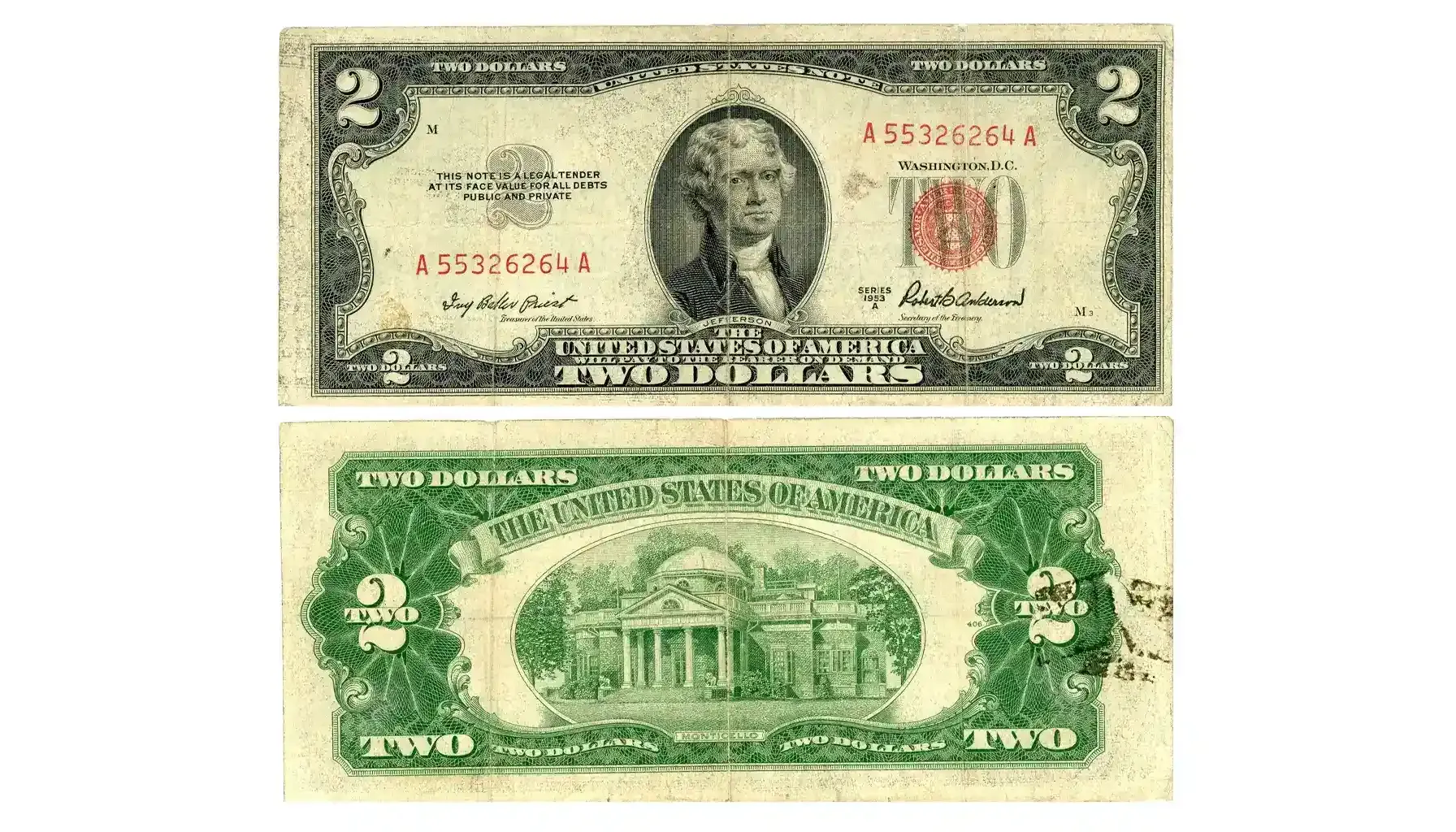
Issuing Authority: Bureau of Engraving and Printing (US Treasury)
Signatures: Ivy Baker Priest (Treasurer) – Robert B. Anderson (Secretary)
Mintage: High
Circulated Value: $4–$8
Uncirculated Value: $15–$25
Star Note Value: $50–$100+
As it might be inferred from the name, this is considered the debut of the 1953 $2 banknote series. When compared to subsequent series, it is comparatively common thanks to its position in the line of issues. In general, uncirculated options may cost $15–$25 for immaculate banknotes, while circulated ones do not exceed the range of $4–$8. Star Note, though, may be worth $50 to $100+.
1953 A $2 Bill
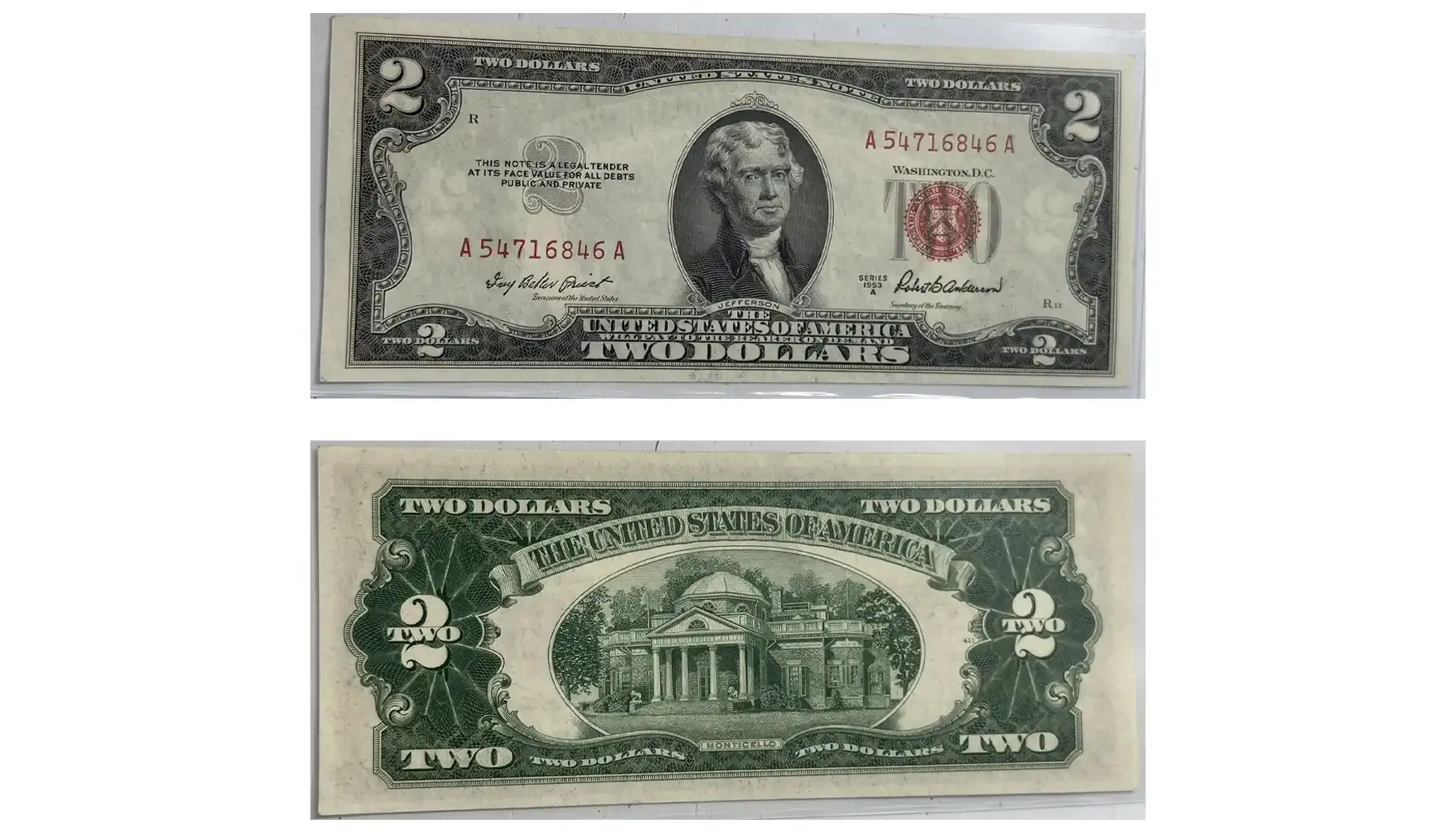
Issuing Authority: Bureau of Engraving and Printing (US Treasury)
Signatures: Ivy Baker Priest – George M. Humphrey
Mintage: High
Circulated Value: $4–$8
Uncirculated Value: $15–$25
Star Note Value: $50–$100+
In this case, the availability and value ranges are similar to those of the original series, even though it was released a bit later. How much is a 1953 $2 dollar bill with red ink worth? The "A" series cannot boast different prices, as this completely repeats the experience of its initial issue (i.e., the worth is the same).
1953 B $2 Bill
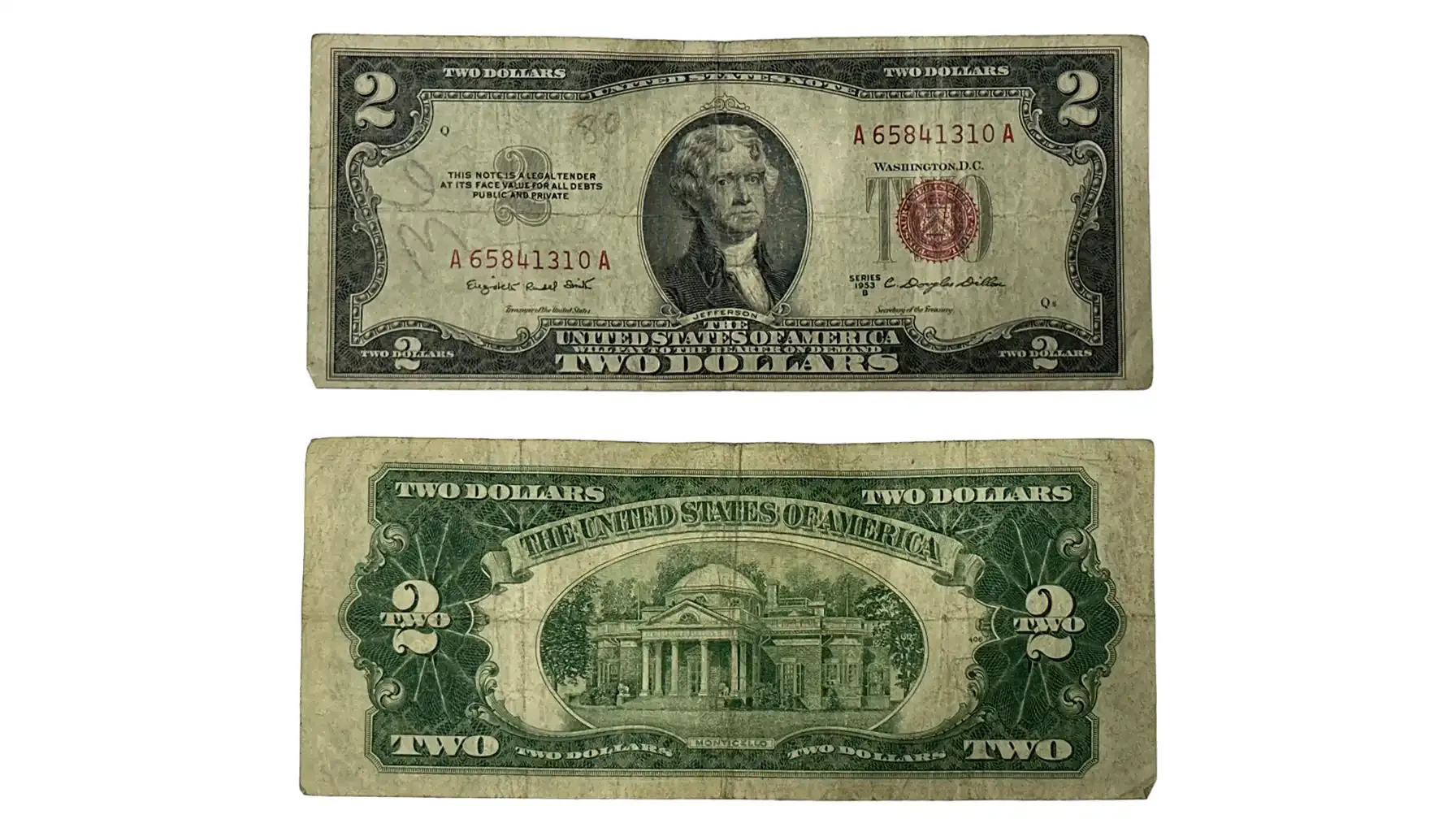
Issuing Authority: Bureau of Engraving and Printing (US Treasury)
Signatures: Elizabeth Rudel Smith – C. Douglas Dillon
Mintage: Moderate
Circulated Value: $4–$8
Uncirculated Value: $15–$25
Star Note Value: $60–$120+
The 1953 B series bears the signatures of C. Douglas Dillon, the Secretary of the Treasury, and Elizabeth Rudel Smith, the Treasurer. Since there were fewer notes from this series released, they were marginally less prevalent in the end. And still, the 1953 red seal $2 bill value refers to $4–$8 for circulated notes and $15–$25 for uncirculated options, too. Star Note may cost $60–$120+, though this pricing can go beyond.
1953 C $2 Bill
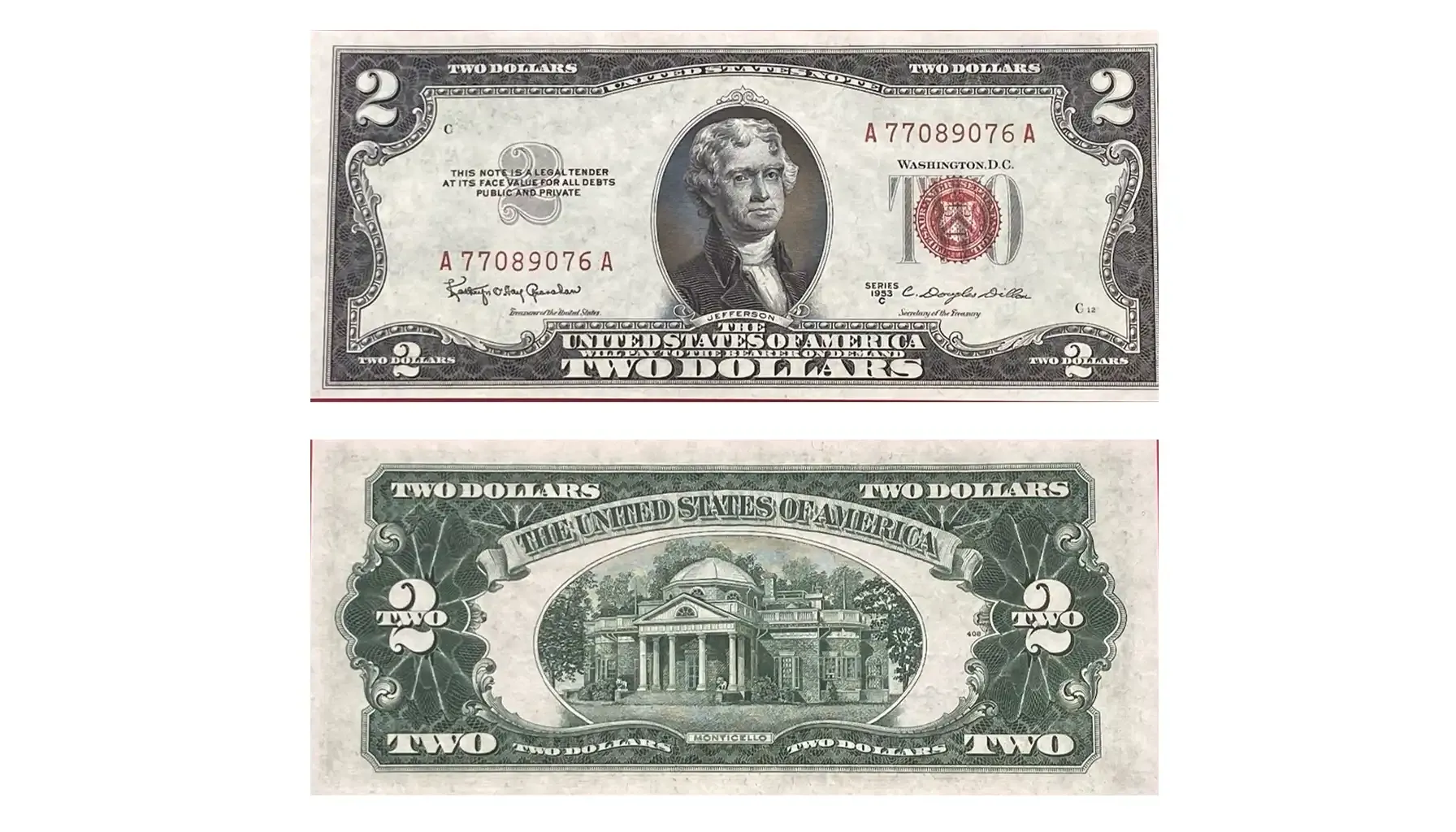
Issuing Authority: Bureau of Engraving and Printing (US Treasury)
Signatures: Kathryn O'Hay Granahan – C. Douglas Dillon
Mintage: Lower
Circulated Value: $5–$10
Uncirculated Value: $20–$30
Star Note Value: $75–$150+
Kathryn O'Hay Granahan, the Treasury, and C. Douglas Dillon, the Secretary, signed the last series of the 1953 $2 banknote lineup. Compared to the prior works, this series is considerably less common, especially in higher grades, especially the star notes. How much is a 1953 $2 bill worth? Well, uncirculated bills generally cost $20–$30, its circulated versions do not exceed the price of $5–$10, and star notes may boast the worth of $75 to $150+.
Here Comes the 1953 $2 Bill Value: Face Worth vs. Collector Worth
At first, one may think that the 1953 2 dollar bill red seal value equals its denomination, though it is not really true. The worth of any unit of currency depends on a number of factors, which may include condition, rarity, and series designation as well. And while it could theoretically be used like any other $2 bill and is still considered a valid currency, this could lead one to lose out on its collector's potential.
Here are general value ranges to explore.
Face Value | $2 (legal tender) |
Circulated Condition | $4–$10 |
Uncirculated Condition | $15–$30 |
Star Notes | $40–$100+ |
Series Letter (A–D) | Slight variations in value |
As usual, the most expensive bills are those in perfect, uncirculated condition, and star notes, which are extremely rare in fact, are those that have a red star next to the serial number. Hence, it is essential to look at its features and condition before choosing to keep or sell one.
How to Assess Your Bill?
If you wonder, “How much is my $2 bill worth?”, start by looking at the main characteristics and condition of this unit of currency. So as to define the worth of a red rare 2 dollar bill correctly, the following steps should not be neglected:
Check the Series and Signatures: To identify whether a bill is from the 1953, 1953A, 1953B, or 1953C series, look at the year and the signatures on the face of the bill. The worth may change depending on the signature, as we have covered before.
Use a Coin ID Scanner: Apps like Coin ID Scanner may definitely assist you in rapidly determining the kind and series of your numismatic instance and even provide an estimated value based on current market trends. So, if you are not sure about the legitimacy or condition of your bill or any bicentennial quarter you own, do not forget to appeal to professionally approved tools like this.
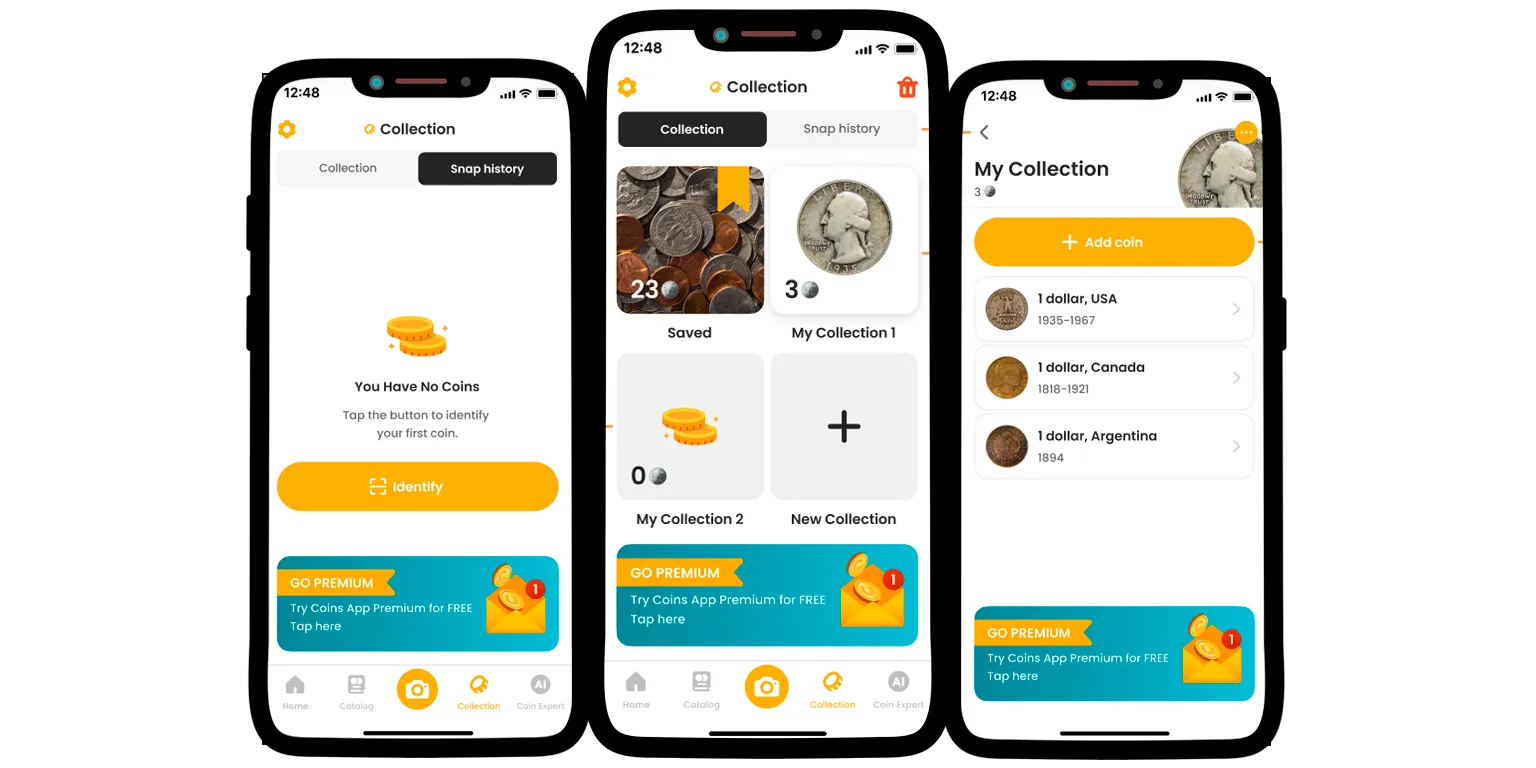
Inspect the Condition: Examine any indications of wear on the bill. Uncirculated bills that are free of folds, rips, and discoloration will sell for a far higher price than those that have been circulated.
Look for Star Notes: As a rule, a star note, which is more expensive and rarer, is indicated by a little star next to the serial number. Try searching for such indicators when inspecting your bills.
To maintain the condition of your 1953 $2 bill, always handle it carefully and keep it in a protective case. Even minor flaws can drastically reduce the value of your note, especially if it is uncirculated or has stars on it.

